Celebrating its 35th anniversary just last year, the Final Fantasy series is one of the most important and iconic RPG franchises in gaming. Along with its contemporary Dragon Quest, it’s largely responsible for popularizing role-playing games in the West as well as establishing the identity and mechanics of Japanese-developed RPGs. Each entry in the franchise is noteworthy for how it moves the needle in terms of both its genre gameplay and its ability to tell a captivating story. Perhaps no other title in gaming is as synonymous with impactful stories as Final Fantasy. Further, the series holds a special niche of combining high fantasy with science fiction.
With more than 60 titles across three decades, there’s a lot to dig into when discussing a Final Fantasy series chronology. There are now 16 main entries, as well as a slew of ports, remasters, and remakes. Not only that, there are more than 30 spin-off titles and side games that dabble in a variety of non-RPG genres. In this, Part I of our two-part series on the franchise, we’ll be looking at the main games and their various versions across the medium. So, step forward Warriors of Light, and restore balance to the crystals.
Final Fantasy (1987)
- Originally released for the Famicom (JP) and NES
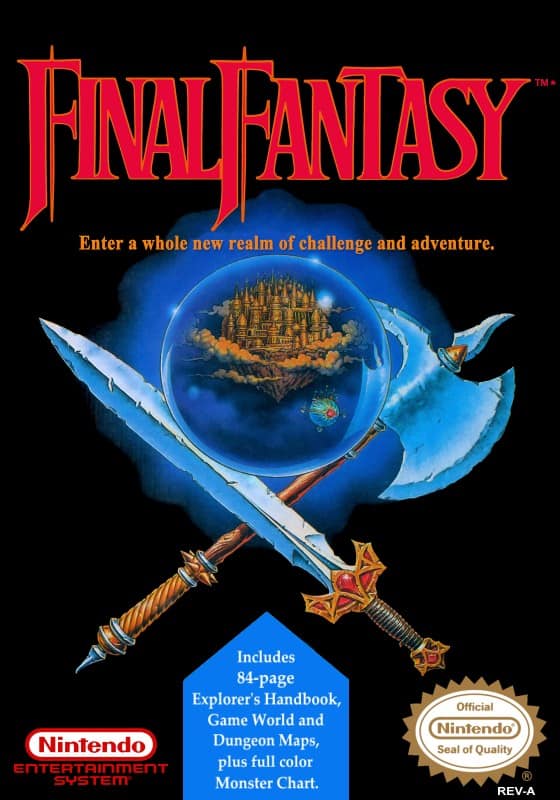
©Box art for Final Fantasy on NES
Arriving in 1987 for both the Famicom and the NES, Final Fantasy established many series trademarks right off the bat. Players control a party of 4 heroes, with each of them having a fixed class once chosen at the game’s beginning. Battles are turn-based, with encounters occurring randomly both on the overworld map and in dungeons. Successfully defeating enemies awards experience points and gold, with characters leveling up and becoming capable of taking on more challenging foes after accruing enough experience.
The story of the game involves our heroes, the Warriors of Light, attempting to disrupt a 2000-year time-loop created by the dark knight Garland in hopes of attaining ultimate power. While the first game in the series is more rudimentary in gameplay and narrative than future entries, it’s no less important for establishing the template that virtually every other RPG would follow moving forward. Unlike its contemporary Dragon Quest, there is a greater emphasis on story and character, with even the battles themselves switching to a third-person perspective compared to Dragon Quest‘s first-person POV during combat.
Final Fantasy II (1988)
- Released for the Famicom (JP)
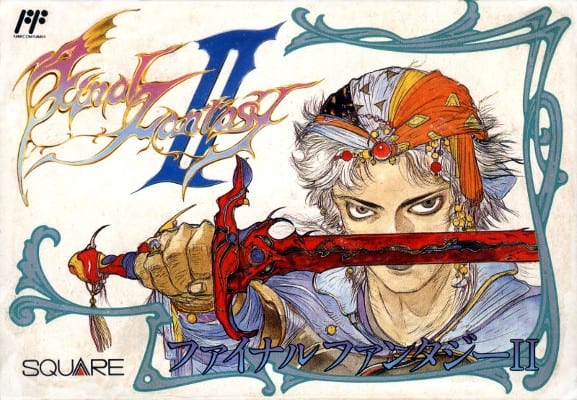
Arriving just a year after the release of the original, Final Fantasy II establishes an important trend for the series moving forward. Namely, the series is an anthology, with each game putting players into the “final fantasy” of the heroes they control and their world. Matching the new world and story are some wild deviations from the first game’s formula. No longer do battles award experience. Instead, players level up individual skills and stats based on their use. If a hero needs to become adept at using swords, they need to strictly attack with swords in battle. Alternately, to buff up defense, characters must allow themselves to be attacked.
While the system is certainly unique and ahead of its time, it proved to be confusing and made Final Fantasy IIsignificantly more challenging than its predecessor. These experiments with the battle and leveling systems would never be replicated in a future title, though the designers of the game would take them and use them as the template for the SaGa series at Square. Thanks to the game’s intense challenge, the title did not make it outside of Japan until many years later. That said, the title holds the distinction of being the first in the series to feature named characters and a more fully developed plot.
Final Fantasy III (1990)
- Released for the Famicom (JP)
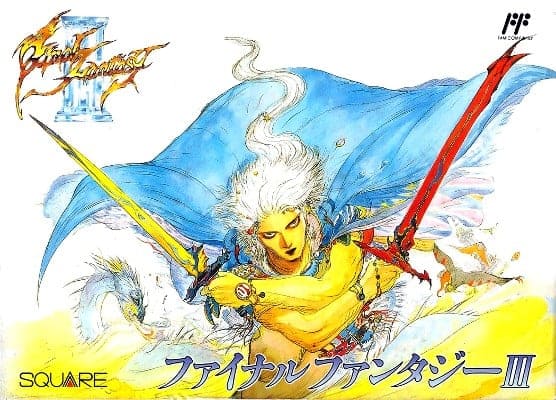
©Box art for Final Fantasy 3 on Famicom
Final Fantasy III abandons the experimentation of its immediate predecessor in favor of a “back to basics” approach. Returning to the “blank slate” of the first game’s four heroes, Final Fantasy III allows you to imprint your own build on each of the characters. The new Job system allows traditional RPG classes to be equipped and swapped at will.
Now, instead of characters having fixed classes and abilities, players can adjust their party composition at any time. The game affords players more freedom in approaching encounters than any other contemporary RPG of its time. While the Job system is undoubtedly Final Fantasy III’s greatest contribution to the franchise, it’s still a massive improvement over Final Fantasy II and a worthwhile experience.
Final Fantasy IV (1991)
- Released for Super Famicom (JP) and SNES (as Final Fantasy II)
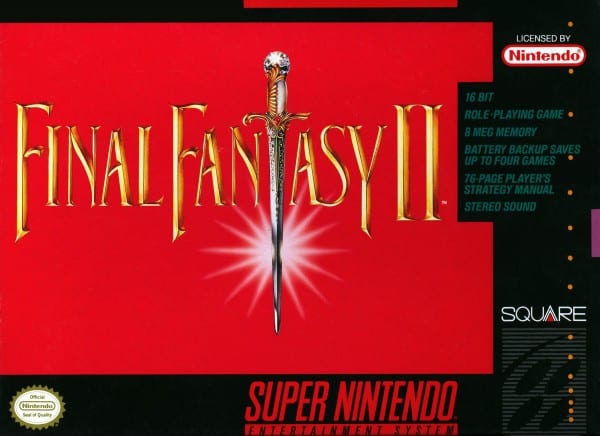
©Final Fantasy 4/2 US box art
The first 16-bit entry in the franchise, Final Fantasy IV is one of the most important games in the series’ history. After dabbling in impactful storytelling in previous entries, Final Fantasy IV introduces players to a defined cast of heroes and villains and dynamic storytelling bookended by meaningful character development and interpersonal relationships. For one of the first times in the medium of video games, the story was successful at eliciting real emotion from the player. The tale of Cecil and his journey from Dark Knight to Paladin as he battles against the evil Golbez is one of the best tales told in the 16-bit era.
Not content to simply provide a great story, the fourth entry in the franchise also introduces one of the most radical changes to the battle system. Dubbed the Active-Time Battle system (ATB), battles are still turn-based but each hero and foe now have their own timer that dictates when actions take place. Rather than pure “turns” back and forth, battles are more dynamic and require players to think on their feet. The system would prove to be so revolutionary that it was used in several other Square titles and in subsequent Final Fantasy games moving forward.
Final Fantasy V (1992)
- Released for Super Famicom (JP)
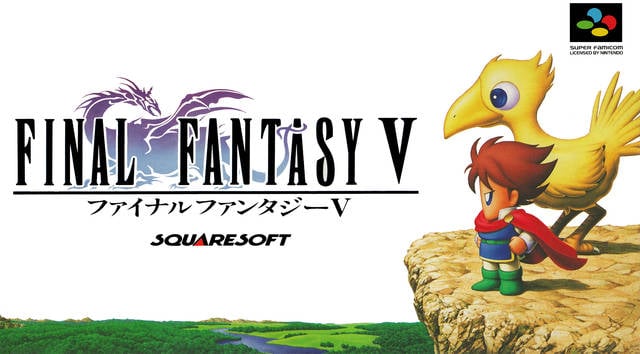
©Box art for Final Fantasy V on Super Famicom
It’s a shame that Western audiences didn’t get to experience Final Fantasy V until many years after its release. Though it does share a lot in common with Final Fantasy IV (part of the reason why Square held off on localization efforts and focused on Final Fantasy VI instead), it reintroduces and expands on the Job system from Final Fantasy III. Further, the story is much more lighthearted than its predecessor, featuring plenty of comic relief and one of the series’ more interesting main villains. That said, it does have some uneven pacing and a bloated second half. It doesn’t quite reach the heights of its predecessor or sequel, but it’s still an arguably great game.
Final Fantasy VI (1994)
- Released for Super Famicom (JP) and SNES (as Final Fantasy III)
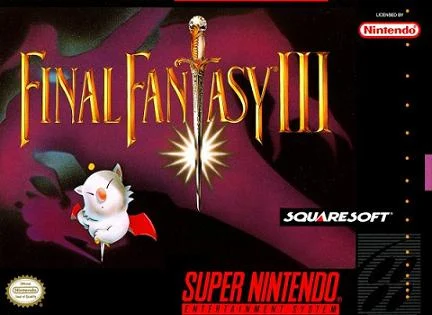
©SNES box art for Final Fantasy VI/III
Not only is Final Fantasy VI the last series game on 16-bit hardware, it’s quite posisbly the best game in the franchise. Rather than focus on a main hero and their companions, the sixth game famously has one of the best ensemble casts in the entire series. Although players begin the game as Terra, the focus quickly shifts from hero to hero to tell one of the best stories ever told in gaming, Final Fantasy or otherwise. Unlike its predecessors or any other contemporary RPG, FFVI answers the question of “what happens if the bad guys win?” and then thrusts players into a post-apocalyptic nightmare halfway through the main adventure.
Outside its incredible story and series-best main villain, the sixth game in the series also introduces some great wrinkles to the core gameplay. Characters have their various class skills but, similar to FFIII and FFV, every party member can learn magic thanks to the Esper system. The equippable Espers allow for players to tailor their party’s composition to their liking, resulting in the best of both worlds between the Job system and the rigid classes of the heroes in Final Fantasy IV.
Final Fantasy VII (1997)
- Originally released for PlayStation
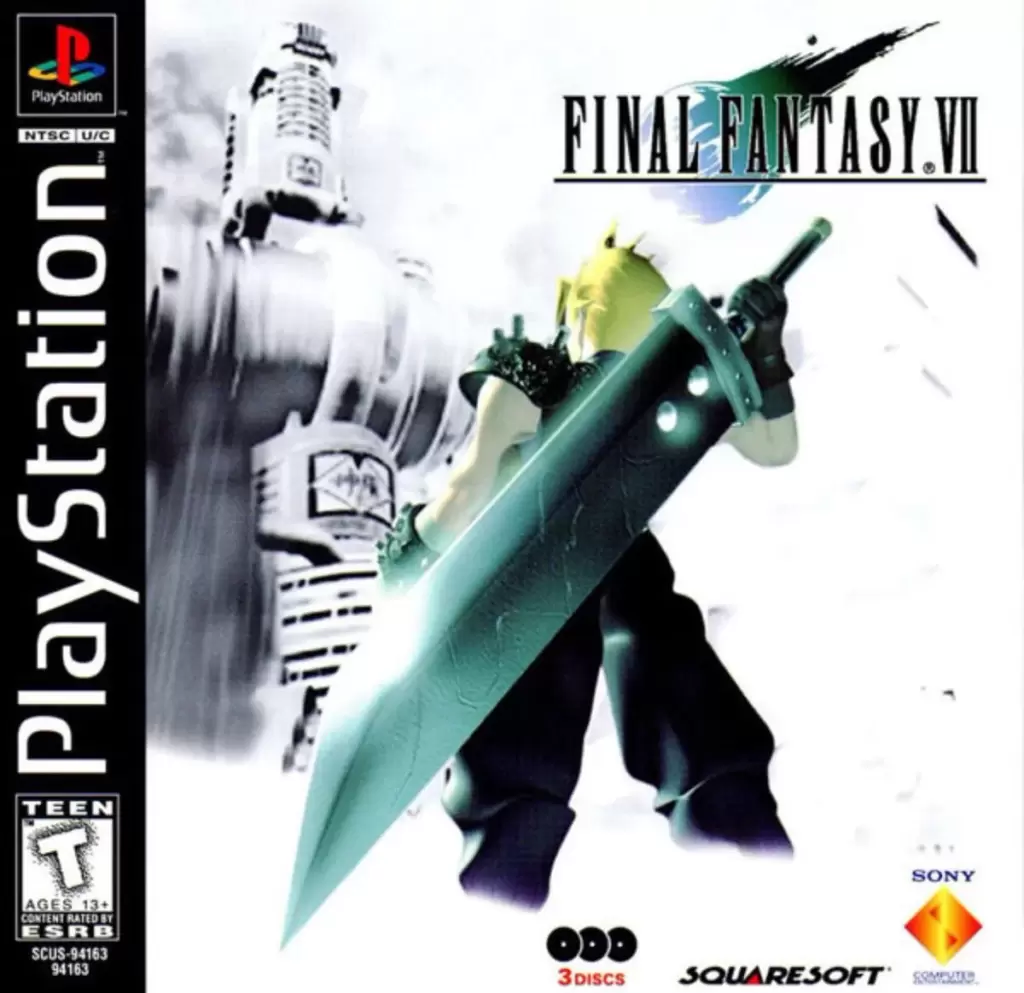
©Box art for Final Fantasy VII on PS1
Final Fantasy VII has the honor of being, if not the best game in the series, certainly the most important. Following an almost decade-long partnership with Nintendo, Square made the bold choice to release the next entry in its flagship series on Sony’s fledgling console the PlayStation. The choice was made primarily thanks to the use of disc-based hardware, which allowed for Square to enhance the narrative elements of the game to greater heights than ever possible before. The rest, as they say, is history.
Featuring some of the most iconic characters and plot points of any game in the series, Final Fantasy VII is an emotional rollercoaster. Beyond that, though, it’s also an excellent evolution of the franchise. Gone are the Espers from FFVI, replaced with the new Materia system. Though the two operate similarly, Materia can also be used to learn skills and abilities as well as provide buffs and nerfs to stats. The resulting meta game of Materia management makes grinding and party composition the best it’s been in the series.
Final Fantasy: Anthology (1999)
- Released for PlayStation
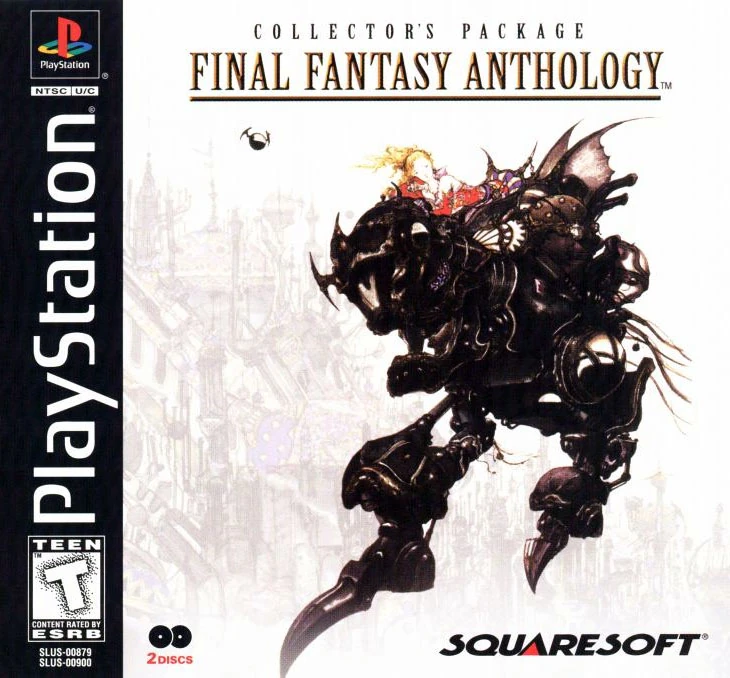
©Box art for Final Fantasy Anthology on PS1
The first of three different collections to release on the PS1, Final Fantasy Anthology collects Final Fantasy V and Final Fantasy VI. Notably, this release marks the first time that Final Fantasy V was available in the West in an official capacity. Beyond bringing both SNES classics to the PlayStation, the Anthology introduces some new FMV cutscenes for each game. Otherwise, both titles remain structurally identical to their 16-bit conterparts.
Final Fantasy VIII (1999)
- Originally released for PlayStation
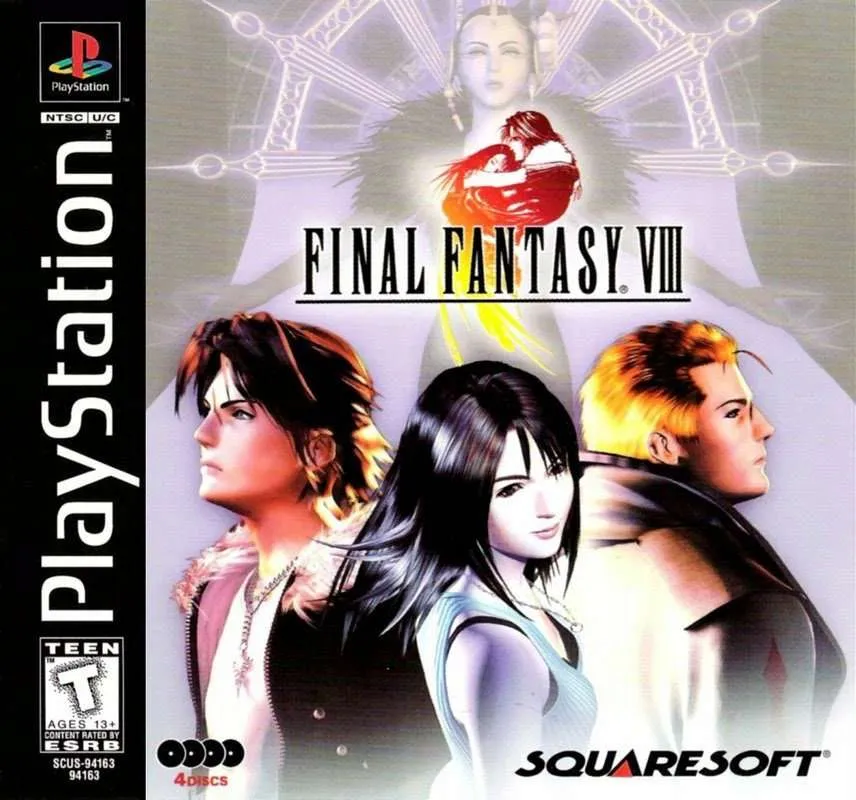
©Box art for Final Fantasy VIII on PS1
Despite its massive visual improvements over its predecessor, Final Fantasy VIII is a bit of a sidestep in terms of gameplay. Notably, the title carries the same spirit of Final Fantasy II in the ways that it experiments with established gameplay formulas. While some of these systems are great ideas, many of them end up being exploitable and break the game. One example in particular is the Junction system, which can see players dealing massive amounts of damage before they’ve even left the game’s opening area.
Outside these faults in the game’s armor, though, there’s an excellent story to be found in the eighth main series entry. Protagonist Squall is also undoubtedly one of the cooler-looking main characters in the series and his Gunblade an almost equally iconic weapon as Cloud’s Buster Sword. ultimately, Final Fantasy VIII is a great but flawed game that falls victim to the expectations set by its predecessor.
Final Fantasy IX (2000)
- Originally released for PlayStation
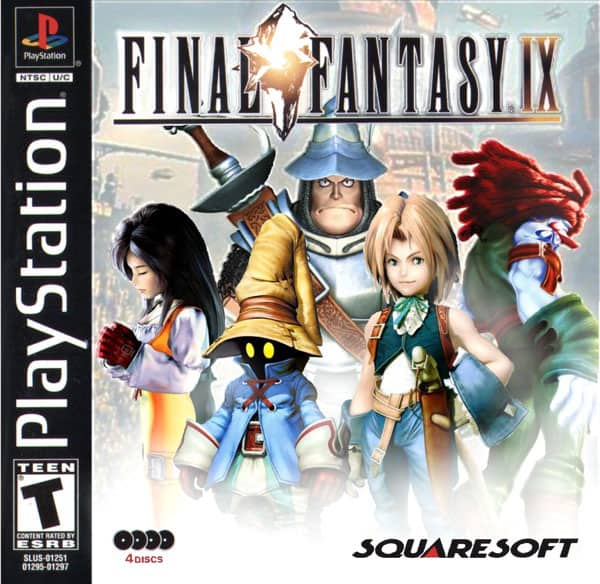
©Box art for Final Fantasy IX on PS1
After the cyberpunk and futurist settings of its two PlayStation predecessors, Final Fantasy IX is a return to the series’ high-fantasy roots. Accompanying this return to form are some series-best characters and music from franchise composer Nobuo Uematsu, making the ninth series entry an emotional high for the series. Beyond its great narrative and satisfying conclusion, Final Fantasy IX also makes some key improvements to the series’ mechanics.
One of the more interesting changes the game implements is the requirement for players to learn abilities from their equipment. Instead of learning skills as they level up, characters instead must equip items and armor and gradually learn the skills embedded in these pieces of equipment. It’s a unique system that has yet to be replicated in another main series entry.
Final Fantasy: Chronicles (2001)
- Released for PlayStation
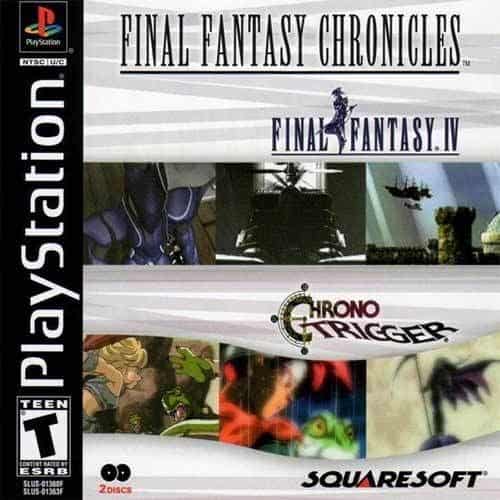
©Box art for Final Fantasy Chronicles on PS1
The second series collection releasing on the PlayStation is Final Fantasy Chronicles. Fans in the West missed out on the Japan-only 1997 port of Final Fantasy IV to the PlayStation, but thankfully see that rectified with Chronicles. Similar to the releases of FFV and FFVI in Anthology, the title remains mostly identical save for the addition of new FMV cutscenes.
Alongside Final Fantasy IV, however, is the PS1 port of Chrono Trigger. Despite not being a Final Fantasy game, Chrono Trigger earns its place in the collection as arguably the greatest RPG ever made. The collection would be worth picking up for FFIV alone, but the addition of Chrono Trigger makes it a must-have entry for the PS1’s library.
Final Fantasy X (2001)
- Originally released for PlayStation 2
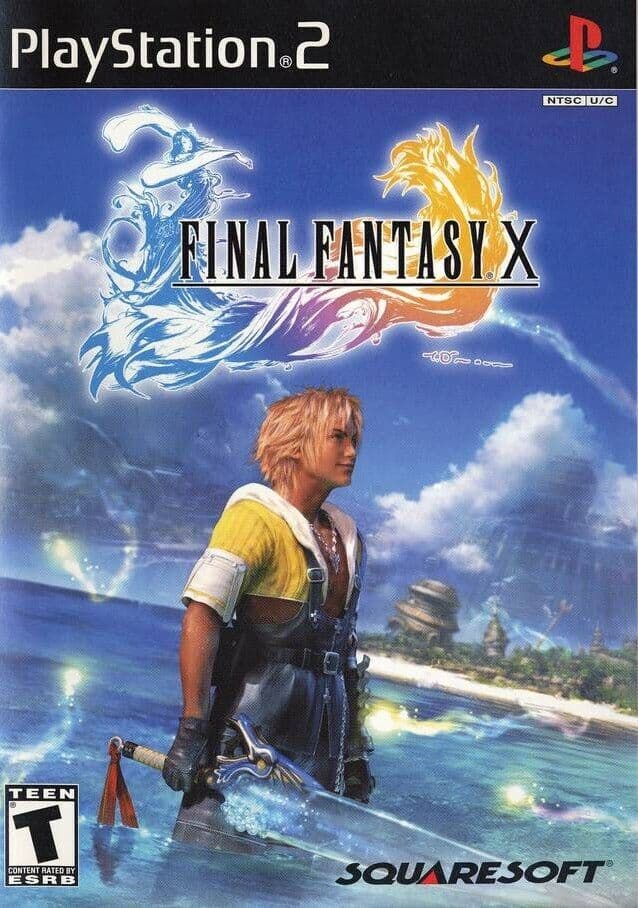
©Box art for Final Fantasy X on PS2
One of the first things players likely to notice when booting up Final Fantasy X for the first time are its incredible visuals. Thanks to the game being the first series entry on the PlayStation 2, the improved hardware afforded greater visual fidelity than any other 3D series title. Along with the game’s great graphics and performance, there is a heart-wrenching story and one of the greatest doomed romances in the series’ history.
In terms of gameplay, the title introduces the Sphere Grid, a clever twist on the classic leveling up and classes from previous games. Now, players have more agency in choosing how to level up and which stats to focus on. The system proved to be popular with players and would see an iteration later in the series.
Final Fantasy XI (2002)
- Released for PC, PlayStation 2, and Xbox 360
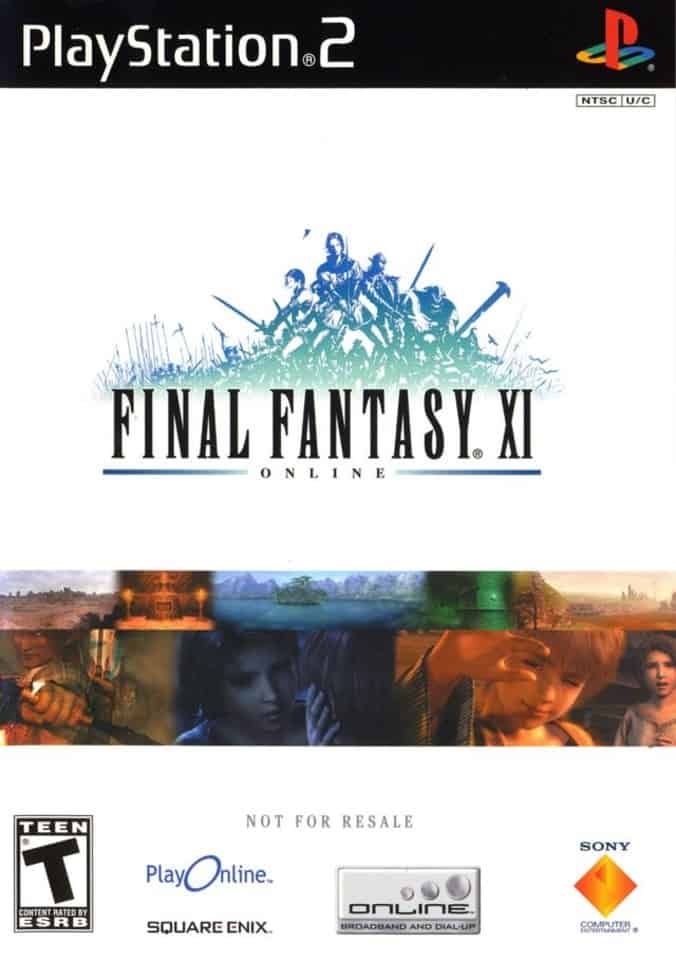
©Box art for Final Fantasy XI on PS2
The first of two MMORPGs in the series, Final Fantasy XI surprisingly still hosts a large community of players more than 20 years after its launch. As the first (and currently only) of the online Final Fantasy games to make it to Microsoft’s Xbox, the title was also the first multi-platform release in the series’ history. While many would consider the series to be primarily focused on the single-player experience, Final Fantasy XI proves that the franchise has legs as an MMORPG as well.
Final Fantasy: Origins (2002)
- Released for PlayStation
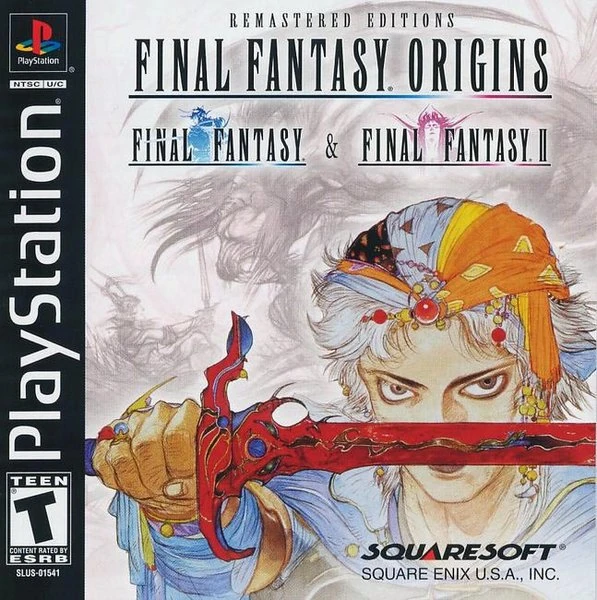
©Box art for Final Fantasy Origins on PS1
Both the last of the series collections on PS1 and one of the final releases for the system, Final Fantasy Origins packages the first two games in the series and brings them to Sony’s console. Origins marks the first official port of Final Fantasy II in a Western release. Fans could now see for themselves what all the fuss was about, with the game coming to the PS1 in a largely unaltered format. That said, there are some key differences in these versions from the NES/Famicom originals.
First and foremost, the versions of the series’ first two games included in Origins are based off their ports for the Bandai Wonder Swan. The visuals and audio are improved over the 8-bit originals and certain text has been updated to reflect a more accurate translation. Beyond the visual changes, Origins includes FMV cutscenes as well as an art gallery featuring series concept artist Yoshitaka Amano’s artwork.
Final Fantasy: Dawn of Souls (2004)
- Released for Game Boy Advance
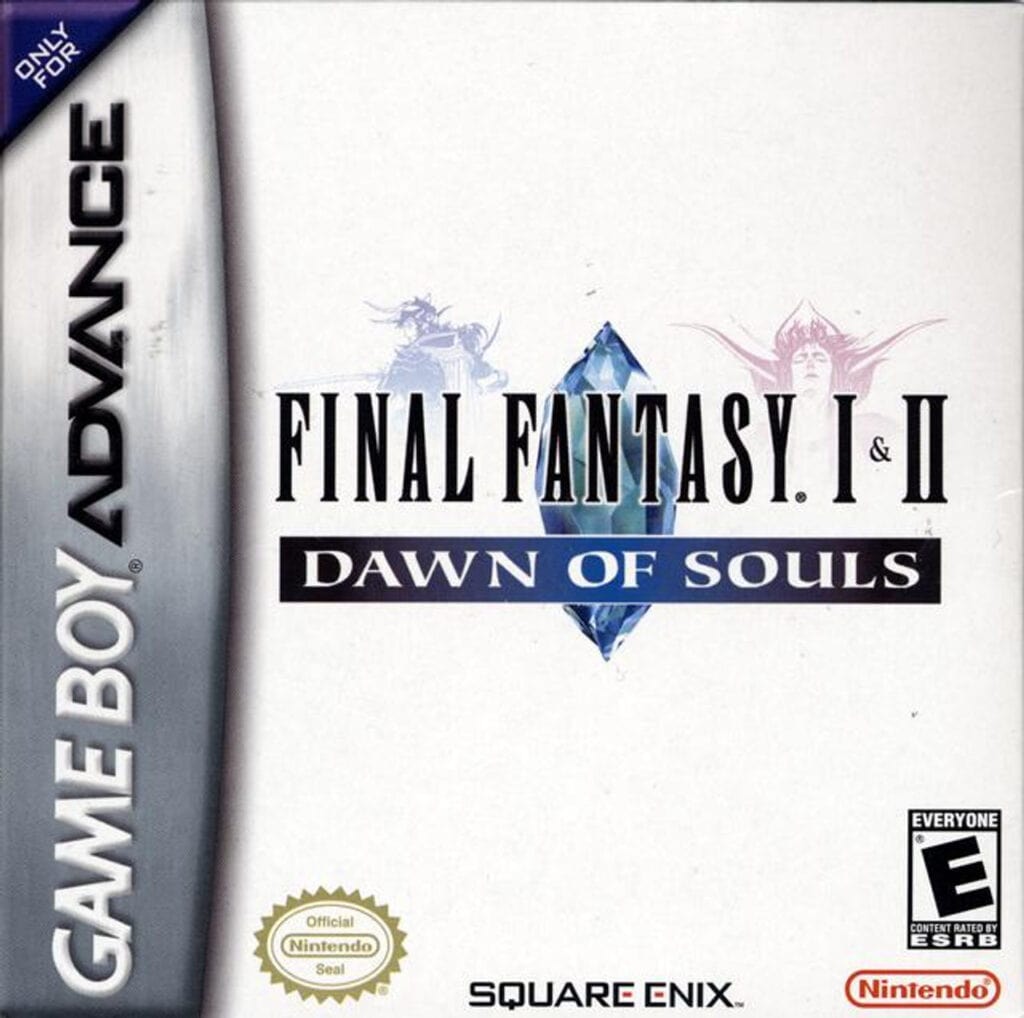
Instead of bringing over the same versions of the first two series entries from Origins over to Game Boy Advance, Dawn of Souls features its own unique ports of Final Fantasy and Final Fantasy II. Several features from the original games are updated in favor of facilitating portability. Rather than needing to visit an inn to save, players can now save at any point on the map. Additionally, the strict number of spells from the first game is replaced with the series’ Magic Points (MP). Beyond these mechanical changes, the game also features exclusive dungeons not featured in any other versions except the PSP Anniversary Editions.
Final Fantasy IV Advance (2005)
- Released for Game Boy Advance
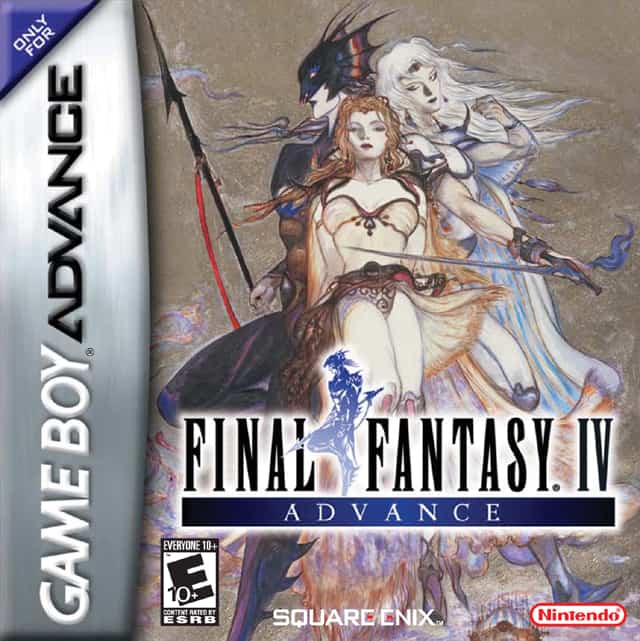
Just like Dawn of Souls, Final Fantasy IV Advance is a unique port of its source material to the GBA. The title features improved visuals over both the SNES and Wonder Swan versions and has completely revamped music. Several instances of text are changed to reflect a more accurate translation of the original script. Though the core game is largely identical to the SNES original, these structural changes and the addition of two new dungeons make the GBA version its own unique entry in the series.
Final Fantasy XII (2006)
- Released for PlayStation 2
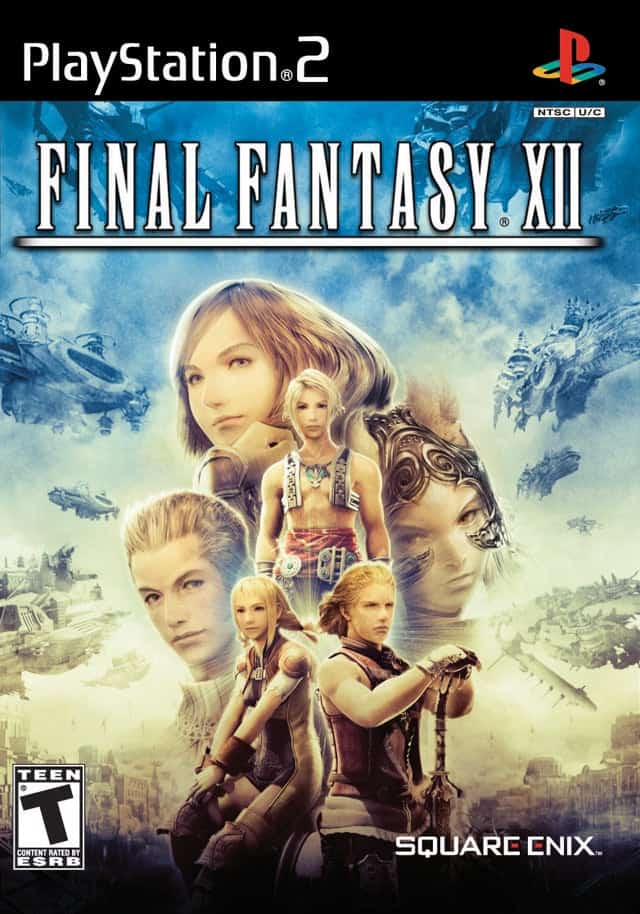
©Box art for Final Fantasy XII on PS2
Featuring direction from Yasumi Matsuno, the same mind behind Tactics Ogre and Final Fantasy Tactics, Final Fantasy XII is a main series entry unlike any before it or since. The introductino of the Gambit system completely revolutionizes the flow of combat, allowing players to essentially “program” behaviors for each of their heroes and have battles play out automatically. The end result is that the need to “grind”, fighting random battles over and over to gain experience, is made much more efficient.
Aside from the unique battle mechanics and opportunity for strategy, the title features a mature story set in the kingdom of Ivalice, the same world from Final Fantasy Tactics. With a great final dungeon, main villain, and cast of characters, Final Fantasy XII is a great sendoff to the series’ PS2 era.
Final Fantasy III (2006)
- Released for Nintendo DS
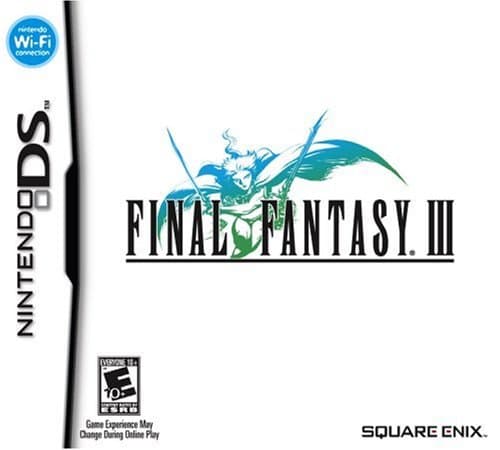
©Box art for Final Fantasy III on DS
The first of two full-3D remakes of older series titles, Final Fantasy III on DS completely reimagines the original game. Instead of the four heroes being blank slates, they are now defined characters with names and personalities. Beyond this key change to the game’s plot, several mechanics of the original are updated. Each of the game’s jobs are subject to rebalancing, with some gaining much more utility than they had in the original. Additionally, the DS version takes advantage of the system’s WiFi to implement MogNet. Players can use MogNet to communicate with others as well as unlock unique sidequests.
Final Fantasy V Advance (2006)
- Released for Game Boy Advance
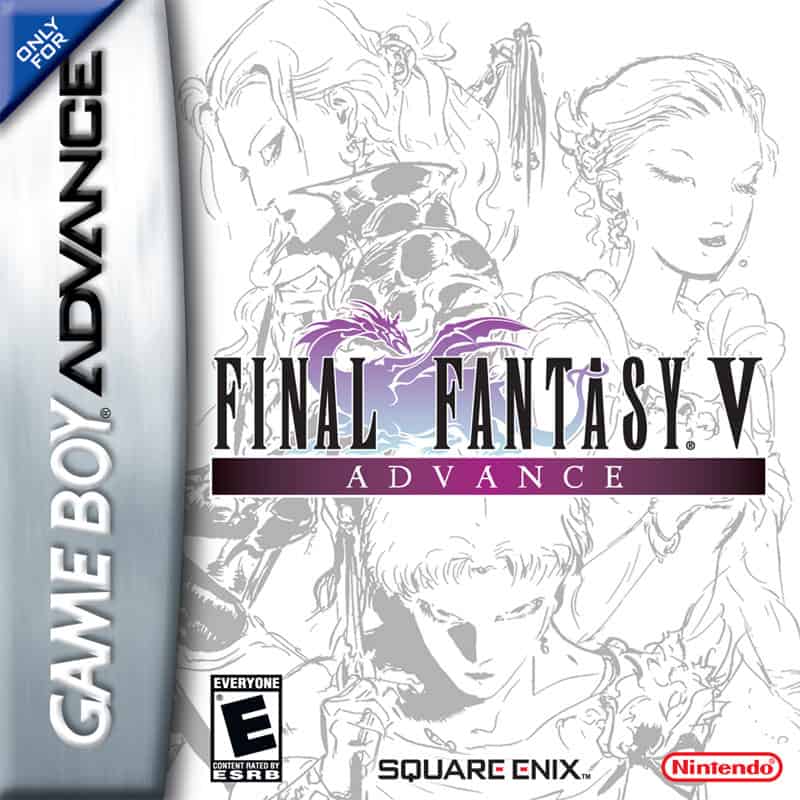
©Box art for Final Fantasy V Advance on GBA
The Game Boy Advance version of Final Fantasy V is mostly identical to the SNES and PS1 versions, with a few key exceptions. First, the GBA version adds 4 new jobs and rebalances several of the existing ones. The script is re-translated to more closely reflect the original Japanese one, and players have access to a brand new dungeon. The GBA version also includes an optional super-boss and a Bestiary for players to complete. Beyond these additions, the visuals and audio also receive improvements.
Final Fantasy VI Advance (2006)
- Released for Game Boy Advance
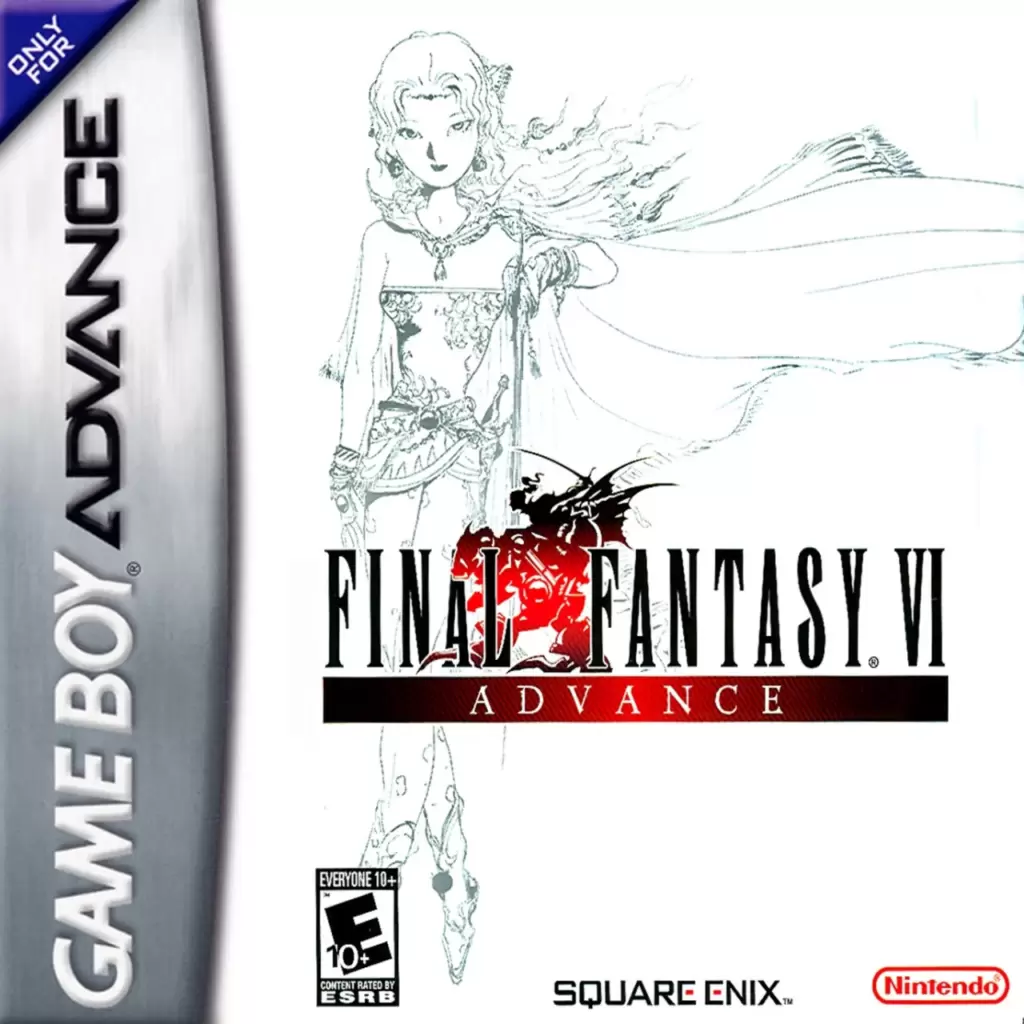
©Box art for Final Fantasy VI Advance on GBA
Many of the changes to the original titles in the GBA versions of FFIV and FFV carry over to Final Fantasy VI Advance. Both the script and visuals receive updates, and there are new renditions of the game’s music. The GBA version also includes four new Espers as well as two optional dungeons exclusive to it. Aside from these changes this version also includes a Bestiary and new spells for characters to learn from the new Espers.
Final Fantasy Anniversary Edition (2007)
- Released for PlayStation Portable (PSP)
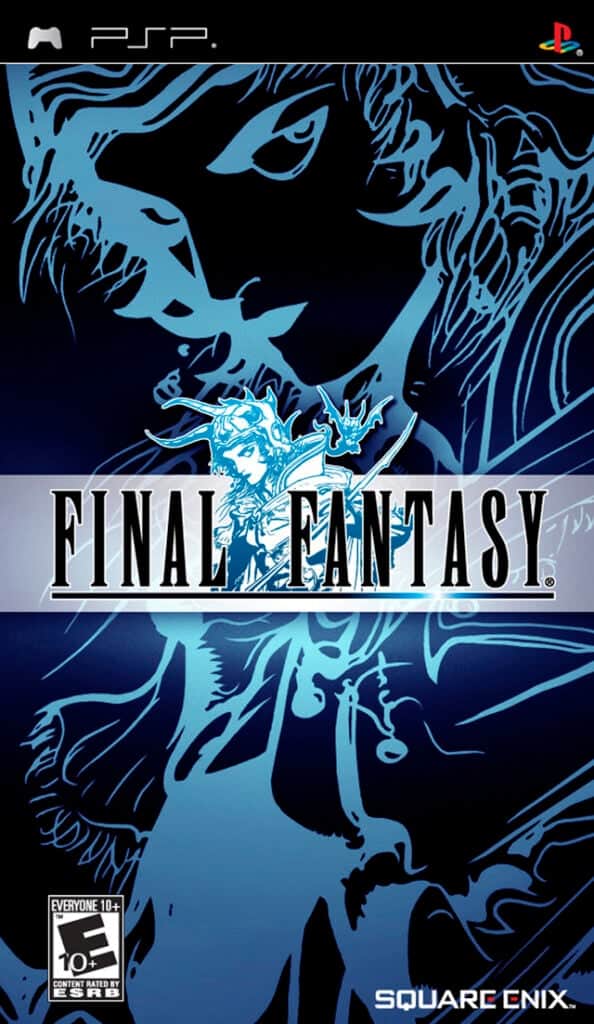
©Box art of Final Fantasy Anniversary Edition for PSP
The PSP version of Final Fantasy includes the Dawn of Souls port of the game alongside a few additions including the new Labyrinth of Time dungeon and enhancements to the graphics and audio. Outside these adjustments, the title is nearly identical to the GBA version.
Final Fantasy II Anniversary Edition (2007)
- Released for PlayStation Portable (PSP)
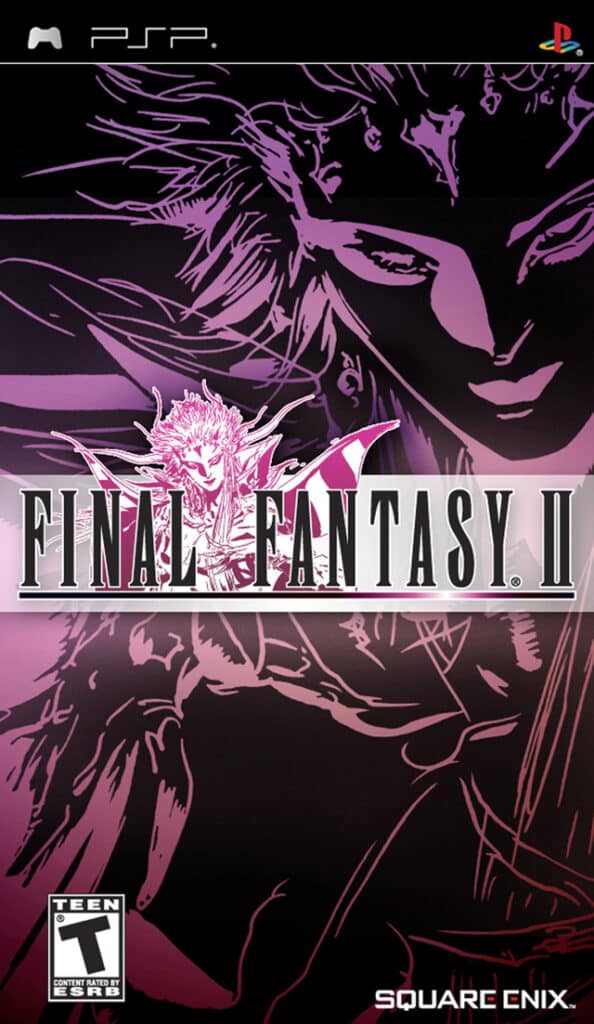
Similar to the PSP version of the original, the 20th Anniversary release of Final Fantasy II is the same as the Dawn of Souls version. The only difference between the two are improved visuals and audio and the new Arcane Labyrinth. This new set of three dungeons awards players with access to the Arcane Sanctuary upon completion.
Final Fantasy IV (2007)
- Released for Nintendo DS, PC, and Mobile
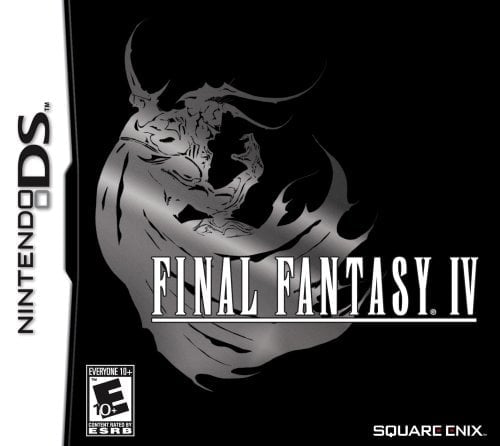
©Box art for Final Fantasy IV on DS
The DS version of Final Fantasy IV is a complete ground-up remake in full-3D, similar to the DS version of FFIII. While the game’s characters and story remain intact, subtle changes to the script help the narrative flow better and add depth to certain characters. Outside of the adjustments made to the game’s presentation and narrative, the gameplay receives some significant changes. First and foremost, the title is much more difficult than the SNES original. While the difficulty adjustment presents a new challenge for both old and new players, the game does compensate by making characters more powerful. Additionally, the inclusion of New Game + allows for players to restart the title with a significant power advantage.
Final Fantasy XIII (2009)
- Released for PC, PlayStation 3, Xbox 360, and Mobile
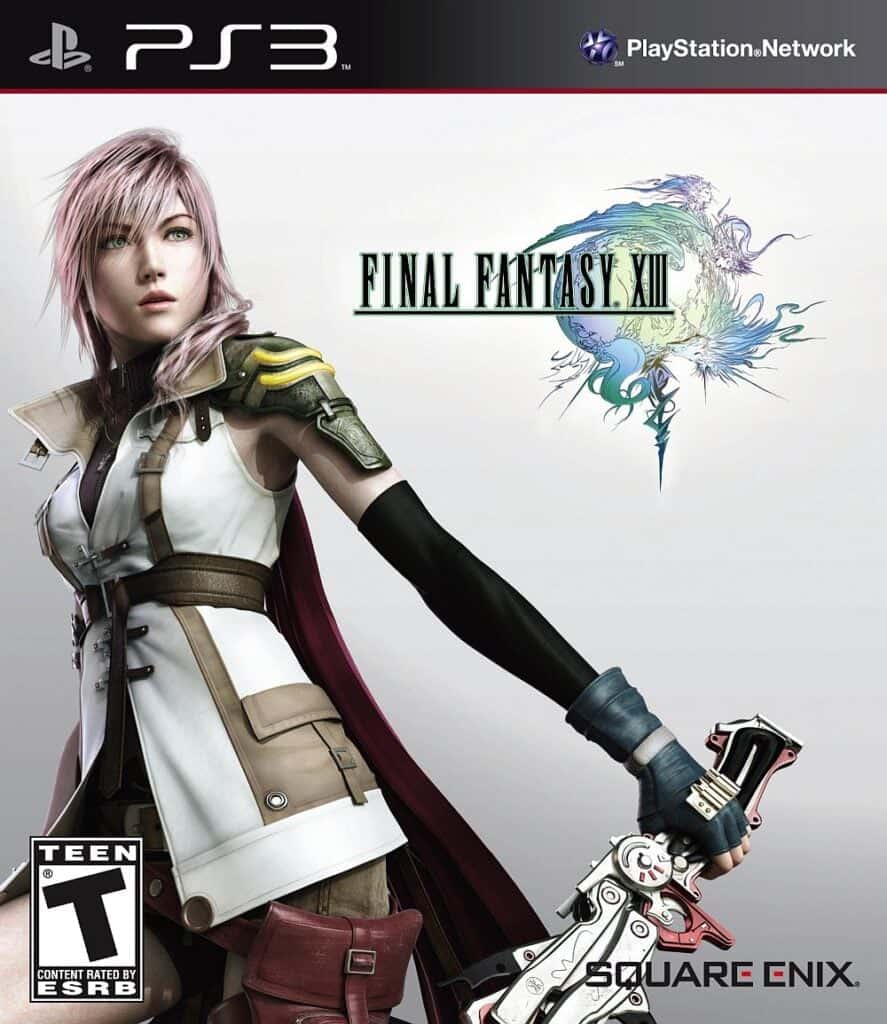
©Box art for Final Fantasy XIII on PS3
The first series entry on 7th generation hardware, Final Fantasy XIII is a polarizing title. Though many praise the title for its Command Synergy Battle system, the game is also subject to criticism thanks to its linearity. Rather than featuring an open world with opportunity for exploration like in previous entries, Final Fantasy XIII largely shuttles players through corridors until the last third of the experience. Despite its flaws, main character Lightning would prove to be popular enough among fans to carry her own spin-off games.
Final Fantasy XIV (2010)
- Released for PC
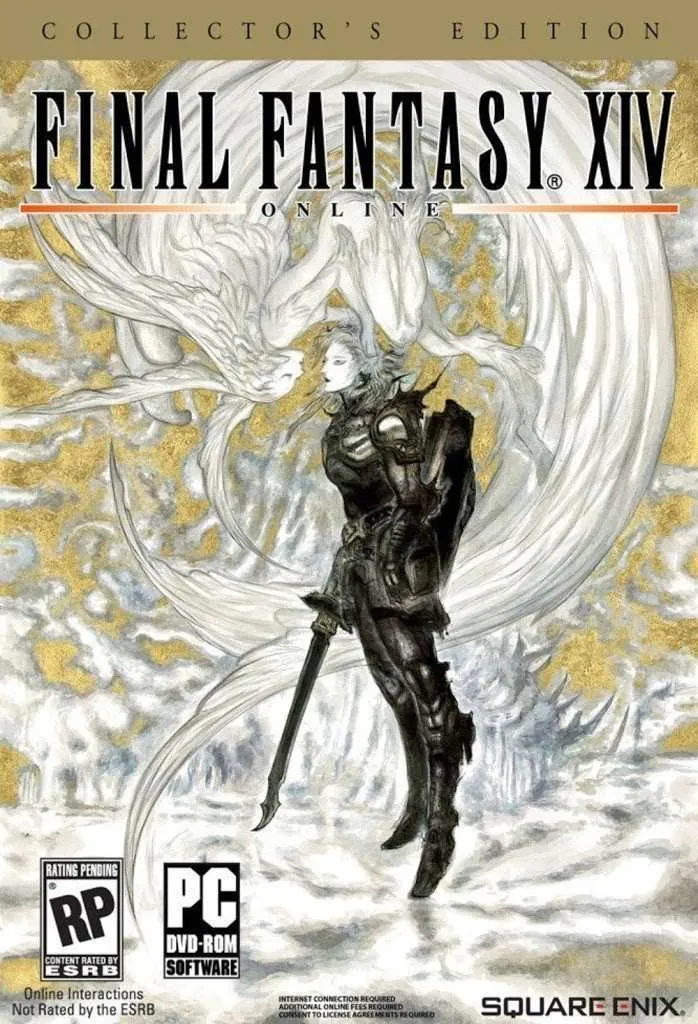
©Box art for the original release of Final Fantasy XIV on PC
Although it’s almost universally loved now (more on that later…) the original version of Final Fantasy XIV was a massive disappointment for both Square Enix and fans. Between technical issues and a lack of interesting content, the title quickly fell out of players’ graces shortly after launch. Thankfully, this would prove to be only a momentary disaster before a complete relaunch of the title.
Final Fantasy IV: The Complete Collection (2011)
- Released for PlayStation Portable (PSP)
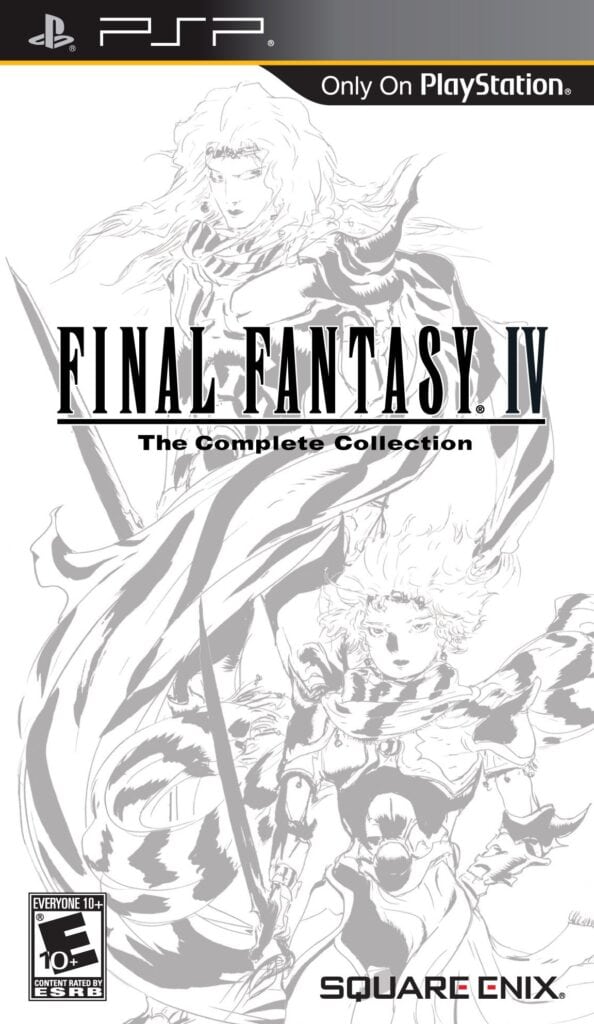
©Box art for Final Fantasy IV Complete Collection on PSP
The Complete Collection of the fourth series entry includes a PSP exclusive remake of Final Fantasy IV as well as the sequel game Final Fantasy IV: The After Years. The PSP version of FFIV uses a similar visual style as the Anniversary Edition of the first two games, and the After Years content retains its original audio and visuals. Unique to this edition of the game is the Interlude, which connects the events of FFIV with that of The After Years.
In The After Years, players assume the role of Cecil and Rosa’s children as they investigate mysterious happenings on the moon. While the title doesn’t use the full-3D visuals of the DS version, this version of the game exists as the definitive release ahead of the Pixel Remasters.
Final Fantasy XIV: A Realm Reborn (2013)
- Released for PC, PS3/PS4/PS5, and Mac
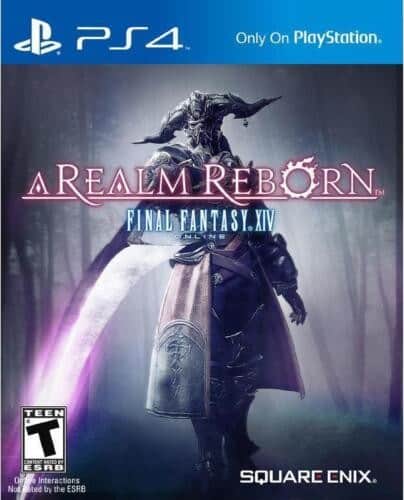
©Box art for Final Fantasy XIV: A Realm Reborn on PS4
Three years after a disasterous original launch, Final Fantasy XIV would arrive on consoles as A Realm Reborn. Using a brand-new engine and completely reworking the main story quest, A Realm Reborn saw the title rise from the ashes like a phoenix. Gone were the server issues and lack of content that plagued the first version, replaced with one of the best storylines in the series and the best version of an online Final Fantasy title. 10 years later, the game is still going strong as one of the most popular MMORPGs on the market, and its mastermind Naoki Yoshida and his team at Square’s Creative Business Unit 3 continue to innovate and bring new content to the title.
Final Fantasy XV (2016)
- Released for PC, PlayStation 4, and Xbox One
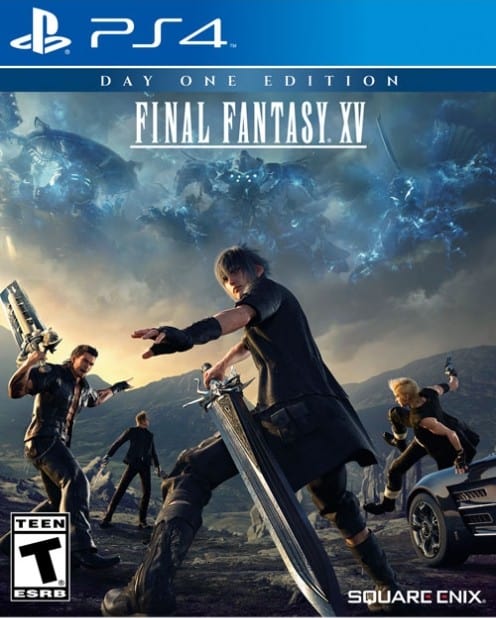
©Box art for Final Fantasy XV on PS4
Final Fantasy XV was the subject of plenty of notoriety ahead of its release thanks to a protracted and troubled development. The game arrived on PC and consoles in 2016, but was still largely unfinished and lacking several features promised in the game’s pre-release. Rather than utilize the series’ trademark turn-based combat, Final Fantasy XV adopts a system similar to Square’s Kingdom Hearts. Though not fully real-time combat, it is a step in that direction.
The title features a massive open world, with one of the game’s main themes being wanderlust. Noctis and his three companions are best friends on a road trip that takes them across the world and back. Along the way, they uncover a nefarious plot to overthrow Noctis’ father and infest the world with daemons. Though Final Fantasy XV‘s developers had intention to continue its story across a multimedia empire, several of those projects were ultimately canceled.
Final Fantasy XII: The Zodiac Age (2017)
- Released for Nintendo Switch, PC, PlayStation 4, and Xbox One
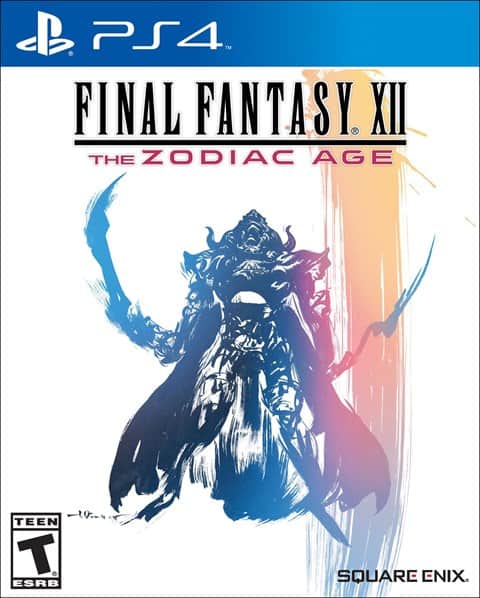
©Box art for Final Fantasy XII The Zodiac Age on PS4
The Zodiac Age is a massive improvement over the original version of Final Fantasy XII. While the story and mechanics stay largely the same, several quality of life improvements help make it the definitive version of the title. The license system receives an overhaul, adding a second board to each character after defeating Belias. Additionally, the title features improvements to the visuals and audio as well as new auto-save functionality.
Final Fantasy VII Remake (2020)
- Released for PC and PS4/PS5
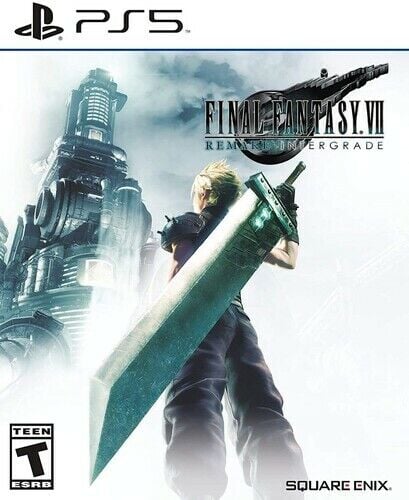
©Box art for Final Fantasy VII Remake on PS5
After years of rumors and hopes of fans, the official reveal of the remake of Final Fantasy VII arrived during E3 in 2015. Further cementing the importance of the title in the franchise’s history, the remake quickly became the most anticipated title in the medium of video games. Finally releasing 5 years after its reveal in 2020, Final Fantasy VII remake proved to live up to most of the hype surrounding the title despite its deviations from the original. Both mechanically and narratively, this game is not the Final Fantasy VII that most remember.
Taking the entire Midgar section of the original game and stretching it to fill an entire release, Remake expands on several characters and plot points from the original that were only briefly touched on in the original. Additionally, the game introduces the concept of the Whispers; entities that exist where the timeline fractures and reality begins to shift. This new wrinkle to the narrative intentionally changes several key elements from the original, opening the door for massive plot deviations in the second two games of the intended remake trilogy. Beyond the narrative shift, however, the title also introduces an excellent combat system that blends real-time action with menu management and party commands.
Final Fantasy Pixel Remasters (2021)
- Released for Nintendo Switch, PC, PlayStation 4, and Mobile
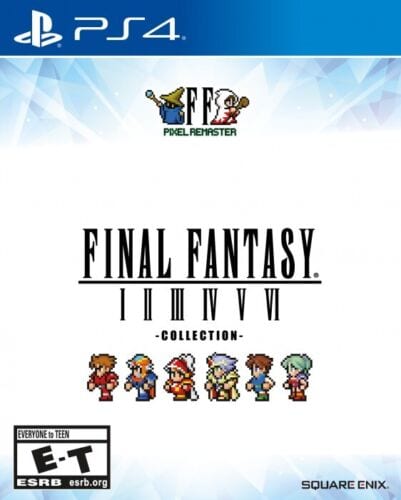
©Box art for Final Fantasy Pixel Remasters on PS4
Releasing first for PC and mobile and later for Nintendo Switch and PS4, the Pixel Remaster series are the latest versions of the first 6 series titles. While the first three Final Fantasy games benefit most from the updates to the pixel graphics, the improvements to IV-VI are subtle but effective changes to improve their presentation on modern hardware. Unfortunately, these are remasters of the base versions of each game and do not feature any of the additional dungeons or changes to the script featured in other subsequent releases. Still, having the series’ foundations available digitally or physically on one console is a welcome addition, and each title still holds up fantastically. Thanks to the Boost system implemented in the Switch and PS4 versions, players can also speed up the leveling process or negate random encounters.
Final Fantasy XVI (2023)
- Released for PlayStation 5
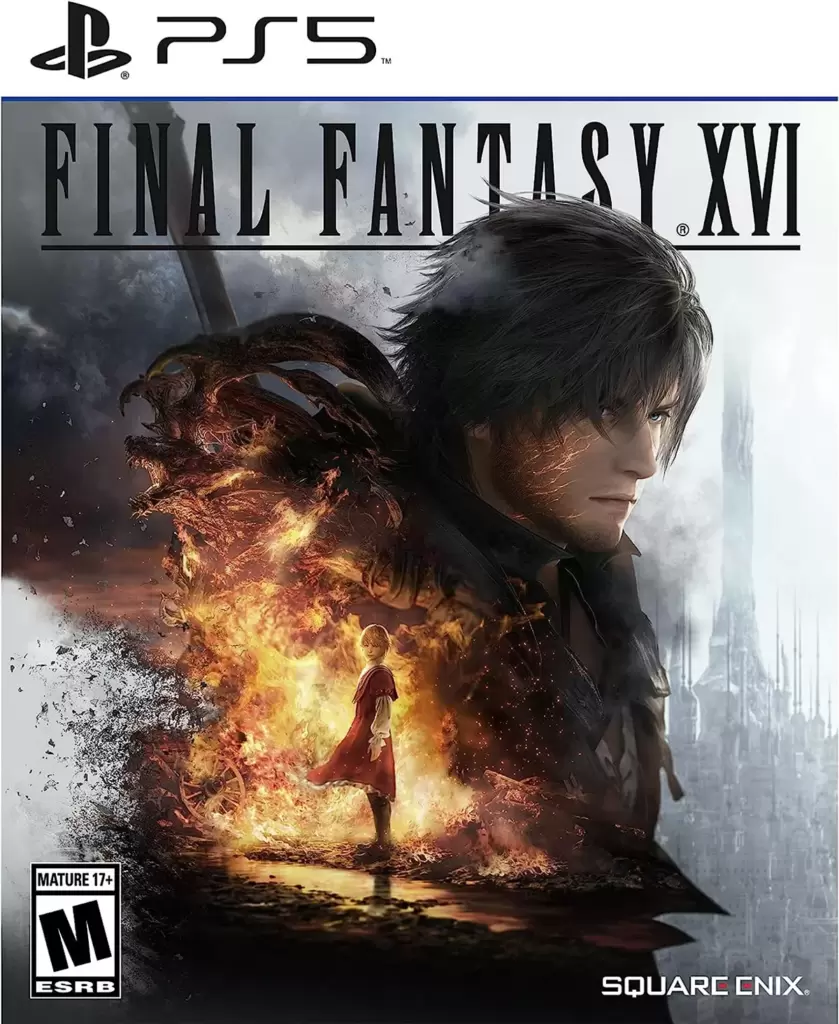
©Box art for Final Fantasy XVI on PS5
The latest entry in the franchise is a distinct departure form what has come before. Not only do the story and dialogue take a decidedly mature approach akin to something like Game of Thrones, the combat system is now (for the first time) fully real-time action. Thankfully, development includes the talents of Ryota Suzuki, whose credits include both Devil May Cry V and Marvel vs. Capcom 2. The gamble pays off, with battles frequently being engaging and creating jaw-dropping spectacle. Final Fantasy XVI also takes advantage of its position being a PS5 exclusive by being one of the best-looking games in the series and having some out-of-this world action setpieces and boss battles.
While some fans express disappointment at the series’ shift away from turn-based battles, the real-time combat is fluid and enjoyable, striking a nice balance between what one would find in a character action game and a hack-n-slash action-RPG. Further, the Eikon (FFXVI‘s version of summon monsters) battles present some of the most bombastic on-screen action of any title in the series. With an emotionally poignant story and some of the best voice acting the series has ever featured, Final Fantasy XVI may buck tradition but it is every bit true to its franchise.
Final Fantasy VII Rebirth (2024)
- Releasing for PlayStation 5 (anticipated 2024)

©Pre-release artwork for Final Fantasy VII Rebirth on PS5
The upcoming release of Final Fantasy VII Rebirth is arguably just as hotly-anticipated as the release of Final Fantasy VII Remake. As the second entry in a planned trilogy of games re-imagining FFVII, fans are curious to see how the narrative and gameplay differ from the original. This game will mark the first time that Cloud and his companions venture outside of Midgar and into the open world. Square has kept many details surrounding the title close to the chest, but it is expected that fans will discover more in the coming months leading up to the game’s release. With the fate of Aerith hanging in the balance, it’s safe to say that many are eager to see how Rebirth deviates from its source material.